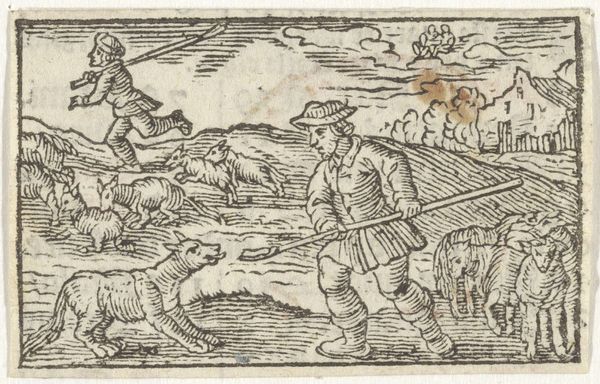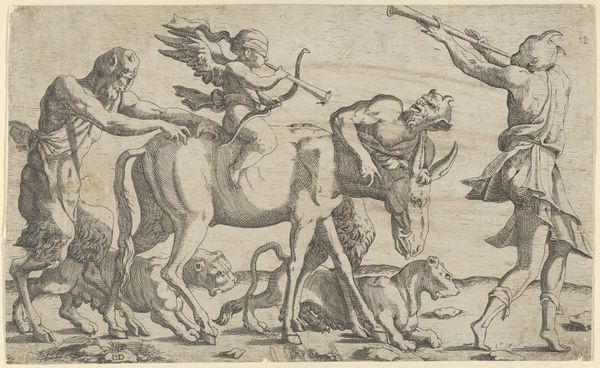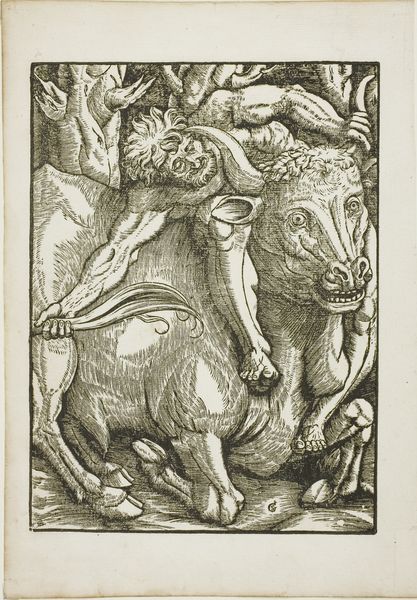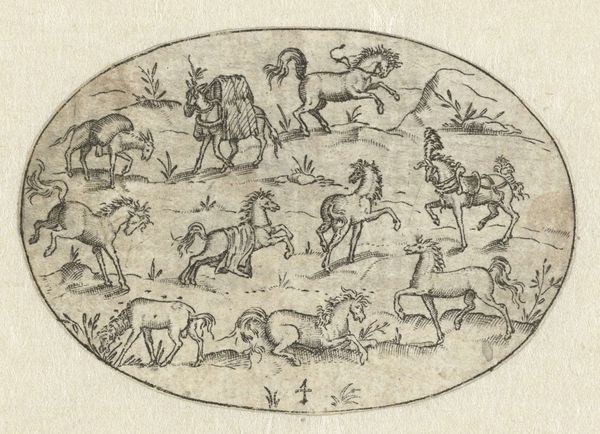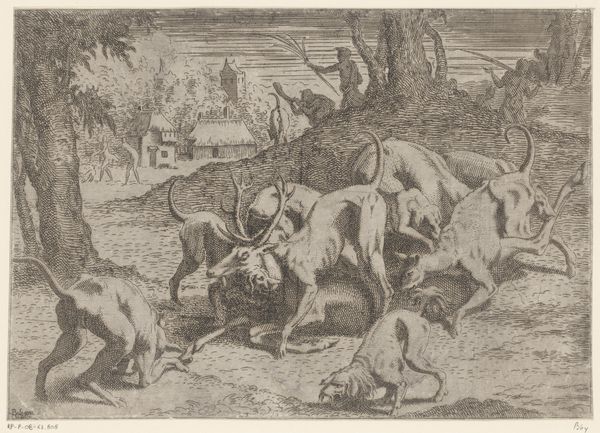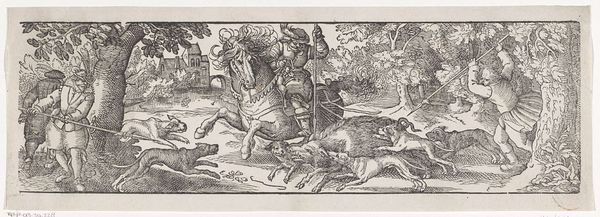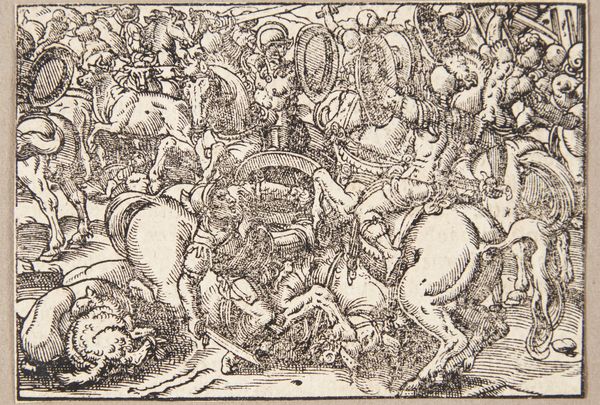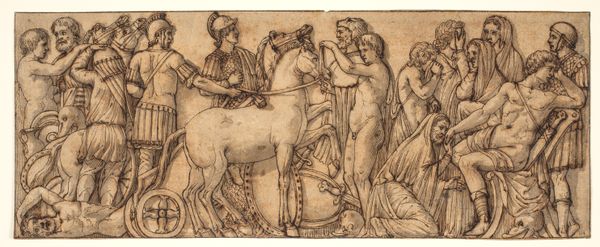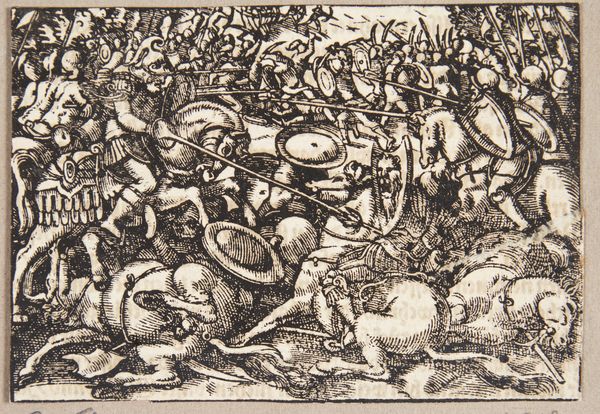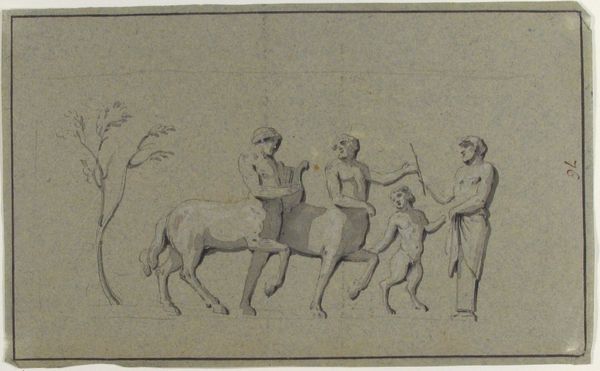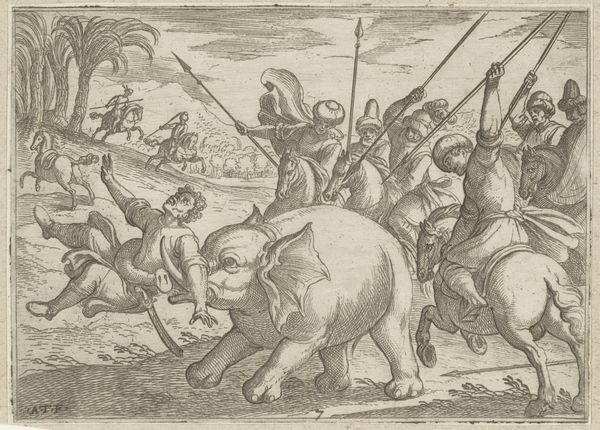
painting, oil-paint
#
painting
#
oil-paint
#
dog
#
landscape
#
figuration
#
oil painting
#
history-painting
#
decorative-art
#
italian-renaissance
Dimensions: Overall: 24 7/8 × 40 7/8 in. (63.2 × 103.8 cm)
Copyright: Public Domain
Curator: This panel depicts "Hunt of the Calydonian Boar" created by Pinturicchio between 1504 and 1514. The medium appears to be oil paint. What’s your initial take? Editor: It strikes me as a blend of dynamic action and decorative art. The figures are caught mid-motion against a backdrop of shimmering gold, a strange but compelling juxtaposition. Curator: Indeed. Considering Pinturicchio’s position in the Italian Renaissance, works like this served very specific functions. These hunting scenes, especially when adorning cassoni or spalliere in elite households, projected power and celebrated family lineage and heroism. Editor: So, this wasn’t simply about aesthetic enjoyment but a display of wealth and social status. The use of expensive materials, like the gold leaf you mentioned, amplifies that message, signaling conspicuous consumption and the family's ability to afford such embellishments. Curator: Exactly. The boar hunt itself was a popular subject; it spoke to the patron’s prowess and ability to subdue chaotic forces. Think about it: the raw power of nature, tamed by aristocratic might. Editor: It's also worth noting how Pinturicchio’s technique departs from pure naturalism. While there's an attempt at anatomical accuracy in the figures, the composition feels deliberately stylized. Look at the flat, almost wallpaper-like application of gold in the background! How did that decorative style affect this artwork acceptance? Curator: The choice of decorative style made it fashionable at that time but has subjected it to a critical reassessment. Now, people judge the relationship between decorative style, cultural representation, and societal role, which were used to promote hierarchy in that epoch. Editor: Fascinating how even a scene of frantic action can reveal layers of socio-political messaging and the economic realities of its creation. Curator: Precisely. The beauty of studying such pieces lies in understanding not just the artistic skill but the intricate dance between art, patronage, and historical context. Editor: Absolutely, and recognizing how even "decorative art" serves as a tangible marker of class, consumption, and the labor required to make art.
Comments
No comments
Be the first to comment and join the conversation on the ultimate creative platform.
